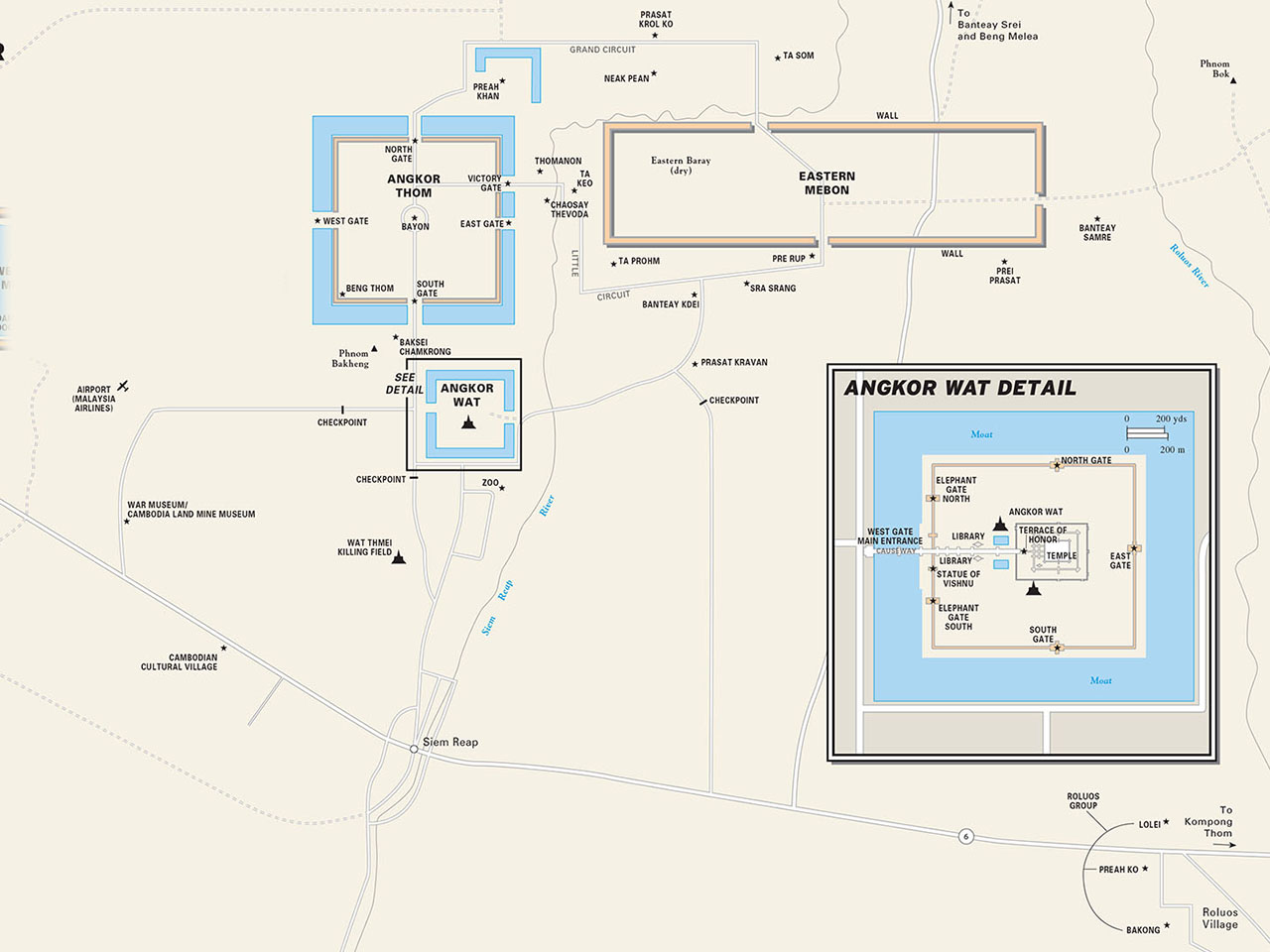Siem Reap – Introduction – A Little History
Thursday, 01-Feb-2018
Tags: Travel
A little history of Angkor in regards to the temples.

The Khmer or Angkor Civilization came into existence during the period from 802 to 1431 CE and stretched as far as the modern Thailand-Burma Border in the West and Wat Phou of Laos in the North during its peak.
Angkor Wat History – Early Years
802-850
Jayavarman II was the founder of the Angkor empire, and he proclaimed himself a devaraja or god king (deva = god, raja = king) possessing similar powers to the Hindu god Shiva. You’ll find that this god-king theme was also adopted by his ‘successors’ throughout Angkor Wat’s history. Jayavarman II built a temple mountain at Phnom Kulen (Kulen Hill/Mountain).
877-889
Indravarman I is considered to be a usurper. At Rolous he built the Preah Ko and Bakong temples, some of the first ones with moats surrounding them. The moats have a religious significance also. It is said that the mythical Mt. Meru is surrounded by lakes.
889-910
Yasovarman I was Indravarman I’s son, and during his reign he moved the capital to the Angkor area as we know it now.
928-942
Jayavarman IV was another usurper. He moved the capital city to Koh Ker.
944-968
Rajendravarman II moved the capital back to Angkor. Among others, he built Pre Rup.
968 – 1001
Jayavarman V was Rajendravarman II’s son. During his reign, among others, he built Banteay Srei, which has been hailed as the prettiest of all temples on earth, due to its magnificent and deep detailed carvings. Interestingly, Banteay Srei was not commissioned by the king, but rather by a Brahman (who could have been Jayavarman V’s tutor).
Angkor Wat History – Classical Period
1002-1049
Suryavarman I was another usurper. This was the beginning of the classical age, which means abundant and productive temple building. Suryavarman is believed to be the promoter of Buddhism in Cambodia. Although he adopted the god-king status, Buddhism and Buddhist sculptures made their way into the Angkor city. Today, 97% of Cambodians are Buddhist.
1049-1065
Udayadityavarman II as the son or Suryavarman I.
1112-1152
Suryavarman II was the king responsible for beautiful Beng Melea and the grand Angkor Wat temple, which he dedicated solely to the Hindu god Vishnu. Although the Angkor Wat temple signifies the high achievement of the Khmer people, there were signs of decline. The city was overpopulated, the agriculture could not keep up, and canals had started to dry up.
1181-1219 (The peak of Angkor Wat history)
Jayavarman VII took over the reign of the Khmer empire, after it was invaded by the Dai Viet (Vietnamese army). He built Angkor Thom, larger in area size than Angkor Wat, and Ta Prohm (and others). Jayavarman VII also took Buddhism to another level. Instead of continuing the tradition of Hinduism, he adopted the Buddha of Compassion as his patron and built Buddha structures on his temples. The most noted is Bayon (inside Angkor Thom), one of the most famous Angkorian temples, with its 216 four-faced Buddha statues. Angkor Wat history was forever changed by this move, as Hinduism is now but a minority religion in Cambodia. After his death, the empire steadily went into a decline. The Khmer empire practically ended when the Thais attacked Angkor in 1351 and again in 1431.
The quoted material is taken from Moon
Angkor Wat, "DK Eyewitness Travel Guide: Cambodia & Laos”, Wikipedia, and a number of tourist websites.
A more detailed history of Angkor and the Khmer civilization
--
Larry and Eileen Samberg


